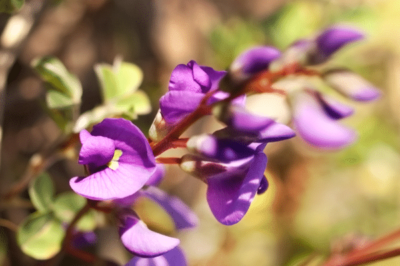We’re excited about a new ingredient we recently added to our Anti-Aging Eye Cream.
It’s called “sarsaparilla root.”
You may have heard of it as the “root beer” ingredient. Sarsaparilla from the Smilax regelii plant was long used to make popular beverages like sodas. The root of the woody vine was added as a flavoring and foaming ingredient in sweetened carbonated beverages.
There’s a lot more to this ingredient than that, however. Turns out that there’s a long history of using sarsaparilla in skin care, for helping with sensitive skin. Within its magical healing properties lies its secret benefit for the skin around the eyes.
What is Sarsaparilla Root?
The term “sarsaparilla” actually refers to several species of the genus Smilax, including those known as Honduran, Jamaican, Mexican, and Indian sarsaparilla. The root-beer type drink made with or flavored by the roots of these plants was also called “sarsaparilla” on it’s own. It was particularly popular in America in the 19th century, and had a reputation as being a favored drink among cowboys in the Old West.
Though sarsaparilla is often considered a type of root beer, it shouldn’t be confused with regular root beer, which used to be made from the roots of the “sassafras” tree. Manufacturers extracted “safrole,” the oily liquid from the root bark of the sassafras plant and used it in the drink, but that ingredient isn’t used anymore because of health concerns.
Oh, and a bit of trivia for you Smurf fans—sarsaparilla leaves are their favorite food.
The plant itself is a brambled, woody vine that likes to climb up to 160 feet. It’s native to tropical and temperate areas, including Jamaica, the Caribbean, Mexico, Honduras, the West Indies, and South America, where it produces small flowers and berry-like fruits (red, black, or blue).
This is a vine you want to be cautious with, as the stems are prickly enough to make it a favorite for forming nearly impenetrable thickets. (No “keep out” sign needed!) It’s got a great reputation as a medical plant, however, and has been used for centuries to heal a number of conditions.
Sarsaparilla Root in Traditional Medicine
The main part used for medicinal purposes is the root, which is long and tuberous like a potato. Native American medicine men would recommend taking it internally to treat sexual impotence and rheumatism.
Other ancient peoples in South America and elsewhere used the root internally to treat headaches, and to help ease the common cold. It was also used to treat kidney disease, fluid retention or edema, fever, digestive problems, and syphilis. In fact, in the 1800s and early 1900s, the herb was listed officially as a syphiliss treatment because of its reputation as a “blood purifier.”
Today’s herbalists like sarsaparilla root for its antioxidant properties. It’s also said to be a good detoxifying agent, as it seems to have the ability to bind to impurities in the bloodstream and help flush them out of the body.
Sarsaparilla in Skin Care
Sarsaparilla is a good source of “saponins,” which are natural carbohydrates found in plants. They have shown in studies to have good antioxidant properties, and also have the “foaming” properties manufacturers liked for their carbonated drinks.
Sarsaparilla also contains flavonoids and nutrients like copper, iron, manganese, vitamins A and D, and zinc, making it a good anti-aging ingredient for the tender skin around the eyes.
We recently added it to our Anti-Aging Eye Cream. Here are the main benefits of sarsaparilla in skin care:
- Antioxidant: Sarsaparilla contains natural antioxidants that help protect from environmental stressors.
- Cleansing: Sarsaparilla helps cleanse removing dirt and impurities.
- Moisturizing: Sarsaparilla contains natural fats that contribute to skin’s own moisturizing properties.
- Tonic: Typical words associated with sarsaparilla include “tones” and “balances.” This action helps keep the skin around the eyes looking fresh and renewed.
You’re likely to hear more about sarsaparilla in skin care in the near future, because it’s just starting to catch on as a beneficial ingredient for the skin here in the U.S. For now, though, Annmarie Skin Care may be one of the few places you can find it—and benefit from it.
If you try it in our updated Anti-Aging Eye Cream, let us know what you think!
Have you used sarsaparilla root? Please share any tips you may have with our readers.
Sources:








So I’m guessing that although sarsaparilla root has all these health benefits, that doesn’t mean I can get said health benefits from drinking root beer? 🙂